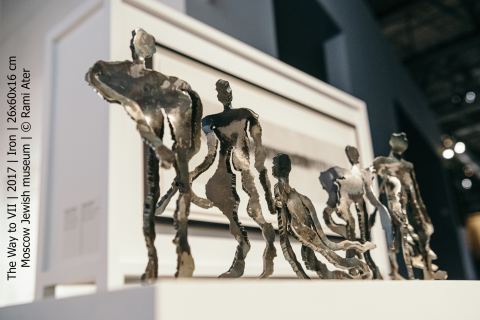Featuring
תגובות
Alice
سایت تخصصی تعمیر یخچال در محل
ما با نیم قرن تجربه در تعمیرات و شبکهای بزرگ از تعمیرکاران متخصص در کنار شماییم تا بهترین و ارزانترین خدمات
تعمیرات لوازم خانگی را برای شما به ارمغان آوریم.
برای اینکه تعمیر یخچال فریزر
به صورت اصولی انجام شود، بسیار مهم است که طریقه باز کردن قطعات را بدانید.
در این بخش توضیحات مختصری داده ایم که پیشنهاد میکنم
برای دانش بیشتر از تعمیرات یخچال حتما
ویدیو های سایت آی پی امداد را
مشاهده نمایید تا به راحتی در منزل خود قطعات را باز نمایید.
در مواقع برفک زدن یخچال حتما به صورت دستی اقدام
به برفک زدایی کنید اگر یخچال شما نوفراست یا یخچال بدون برفک است،
در صورت برفک زدن مشکل از دیفراست یخچال است و هر چه زود تر برای تعمیر یخچال
اقدام کنید. اگر یخچال شما خاموش شده است بایستی نخست از اتصال کابل برق آن و فیوز ها اطمینان حاصل
نمایید. اگر از این اتصال مطمئن شدید امکان دارد
روشن نشدن این وسیله به علت نقص مدار کمپرسور، کلید مهار دمای سرد، برد مهار الکترونیکی و…باشد.
لازم است بدانید برای جلوگیری از تعویض موتور یخچال بایستی
به تعمیرات جزئی این وسیله حتما بپردازید.
می توانید از بهترین هزینه تعمیر یخچال که گاهی
کمتر از نرخ مصوب است، برخوردار
گردید. با پیشرفت تکنولورژی برد الکترونیکی جای قطعات مکانیکی مانند ترموستات و تایمر را گرفت و کنترل دقیقی تر را از
یخچال فریزر به ما داد .
داشتن سابقۀ طولانی تکنسینهای این مجموعه، سبب شده در مواجهه با مدلهای
قدیمی یخچال هم بتوانند از مهارت خود استفاده کرده و
مشکل دستگاه را برطرف کنند. نشتی آب از یخچال نشان دهنده ی این است
که شلنگ منتقل کننده ی آب مشکل دارد.
برای رفع این مشکل، می توانید از خدمات
پس از فروش یخچال فریزر سامسونگ استفاده نمایید.
لیست قیمت تعمیرات یخچال
Maurine
تعمیر یخچال فریزر در محل با قیمت مناسب + گارانتی
تعمیر یخچال فریزر در برند های مختلفی
همچون سامسونگ، ال جی، امرسان، اسنوا، هیمالیا و… از
دیگر خدمات تهران سرویسکار
بهترین ارائه دهنده خدمات
تعمیر لوازم خانگی و الکترونیکی
می باشد. شما می توانید همین حالا برای تعمیرات یخچال
فریزر به صورت شبانه روزی در تهران با تهران سرویسکار
تماس گرفته برای انجام این کار به ما مراجعه نمایید.
در این صفخه ما اقدام به ارائه تمامی خدمات تعمیر یخچال و
تعمیر فریزر در برند های مختلف را از سوی تهران سرویس کار
به شما ارائه می دهیم. کاراسان تعمیر یخچال فریزر ، یخچال
دوقلو ، یخچال ساید بای ساید ، یخچال های فروشگاهی و صندوقی و انواع مدل های یخچال
ایرانی و خارجی در تمام برندهای موجود
در بازار را با متخصصین تعمیرات یخچال در تهران
و کرج و البرز انجام می دهد. پس
اگر نیاز به تعمیر یخچال فریزر در
منزل و محل ، تعمیرات یخچال ، سرویس و تعمیر فریزر و یا تعمیرات یخچال ساید
بای ساید و دوقلو در تهران و کرج و
البرز دارید از کاراسان کمک بگیرید.
حقوق مادی و معنوی این سرویس (وب سایت
و اپلیکیشن های موبایل) متعلق به ساناگستر سبز (آچاره) است.
علاوه بر اون، تمامی خدمات تحت پوشش بیمه قرار
گرفتند و در صورت بروز خسارات احتمالی، بیمه خسارتها رو جبران خواهد کرد.
برای تعویض آنها ابتدا تسمه نگهدارنده یا پیچ محفظه را به وسیله پیچ گوشتی آزاد میکنیم.
تمیزی فن یخچال را به صورت دورهای و به وسیله جاروبرقی یا
دستگاه دمنده انجام دهید. • با توجه
به فضای آچاره شما میتوانید در هر موقعیت مکانی که
هستید فردی در نزدیکی خودتان پیدا کنید و در حالت کلی، افراد در محل شما حاضر شده و مشکلی از بابت
مسیر برای شما ایجاد نمیشود. قیمت
ها حدودی بوده و از شما خواهشمندیم قیمت دقیق را
قبل از انجام کار با متخصص نهایی نمایید.
تعمیر یخچال هیتاچی
Myrna
Beneficial content Kudos.
casino en ligne
Very good information, Appreciate it.
casino en ligne francais
Wow loads of useful data!
casino en ligne
Nicely put. Regards!
casino en ligne francais
Great postings Appreciate it!
casino en ligne
Seriously a good deal of fantastic information.
casino en ligne
Thanks a lot! A good amount of material.
casino en ligne fiable
Whoa plenty of beneficial info!
casino en ligne France
With thanks! Awesome information!
casino en ligne francais
Reliable material, With thanks!
casino en ligne
Event Location:


 English
English Français
Français


Hannelore